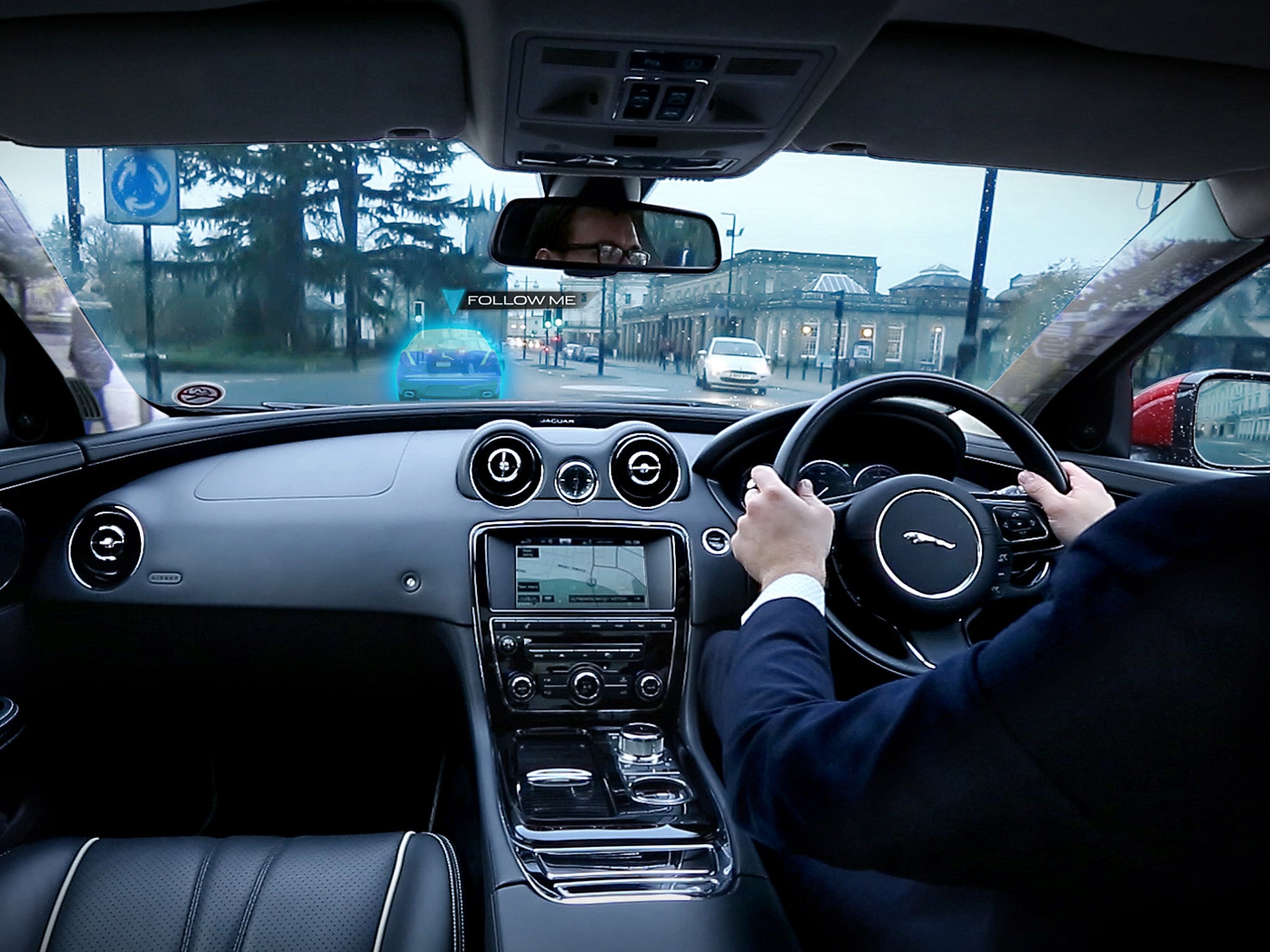Jaguar’s new windscreen project borrows driving game tech for sat nav of the future
Virtual windscreen projects a ghost car and lights other road users up in 'halos', to help reduce accidents

Jaguar is working on ghost cars that drivers will be able to follow to avoid crashes, and technology that will make the pillars that hold up cars’ roofs, all powered by 360-degree cameras and screens built in to the cars.
Jaguar and Land Rover are developing a new heads-up display that it hopes will keep the driver’s eyes on the road and reduce distraction, ultimately cutting down on accidents.
‘Ghost car’ technology projects a slightly unnerving car in front of the driver — lit up in glowing blue, like a real ghost — so that they can follow them and take the best route. The car could also instruct drivers to turn left or right at visible landmarks rather than using road names.
"Driving on city streets can be a stressful experience, but imagine being able to drive across town without having to look at road signs, or be distracted trying to locate a parking space as you drive by," said Wolfgang Epple, the company’s director of research and technology. "We want to present all of this information on a Heads-Up Display in the driver's eye-line, so the driver doesn't have to seek it out for themselves and take their eyes off the road ahead."
It uses screens embedded in each of the pillars in the car, which take a live video feed from cameras that cover the the angles that are usually hidden behind the closed bits of the car that hold the roof up.
That will allow drivers to see all pedestrians, cyclists and other vehicles around the car. If those other road users could become a hazard, a heads-up display will light them up in an ‘on-screen halo’, watching them as they move across the virtual windscreen.
The windscreen could also connect to the cloud, meaning that it would also show information such as petrol station prices and spaces in car parks.
Subscribe to Independent Premium to bookmark this article
Want to bookmark your favourite articles and stories to read or reference later? Start your Independent Premium subscription today.

Join our commenting forum
Join thought-provoking conversations, follow other Independent readers and see their replies